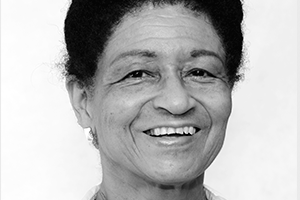This week, NAISDA is proud to celebrate its long association with NAIDOC as highlighted eloquently in the article by NAISDA Founder and Artistic Director Emeritus, Carole Y Johnson during the fortieth anniversary celebrations in 2016.
In The Beginning
More amazing than NAISDA’s achievements over four decades is how it came to be born from a dance performed in protest of the government’s determination to destroy the Aboriginal Tent Embassy on the lawns of Parliament House during the turbulent times of 1972. From this event rose a 40-year-old dance college that produces professional dancers and paved the way for a contemporary Indigenous dance company to share its dance globally.
The idea of an urban Indigenous dance form started from the arrival of the Eleo Pomare Dance Company in Australia for the 1972 Adelaide Arts Festival. I was a principal dancer, and I’ve vivid memories of our performances and of televised news about political activities of Australian Blacks as many Indigenous Australians were then identifying. About a month before our arrival they had established an Aboriginal Tent
Embassy in Canberra.
Land Rights! Human Rights! Change was being demanded and we came with a repertoire of dances filled with social comment. Many of Eleo’s works were
especially pertinent to Aboriginal issues: the Vietnam War, Black American issues, drugs and Native Peoples’ land rights. Sydney’s Indigenous audience, mostly political
activists, was excited by the possibilities of dance as a way to emotionally challenge entrenched thought, a tool for communicating social issues. Later, some realized and
worked towards dance becoming a career possibility.
I remained in Sydney when the company left. I was welcomed as the Black sister from America and stimulated by the exciting political energy and social organization building. Maintaining the Aboriginal Tent Embassy in Canberra, working with the recently formed medical and legal services and preparing for a major national demonstration for NAIDOC day in July was the order of business.
In this politically charged atmosphere in Redfern where Aboriginal people mostly lived, continuity of performing arts started from a single dance workshop. Important to NAISDA’s story is that the participants wanted more.
Intrigued by its possibility in political demonstrations, the activists saw it as a non-threatening way to reach the mainstream audience. So the dance workshop continued
with twice weekly classes and dance became embedded in urban political activity. Then Bob Maza travelled up from Melbourne and used the momentum and energy of the workshop participants to begin his National Black Theatre concept.
In the dance classes I used popular music of the day and traditional “Aboriginal ethnographic” recordings. Significantly, I had been adapting a piece with a social
message by Rod Rodgers, another esteemed African-American choreographer.
Significant because soon I was asked to lead Indigenous Australians with limited
dance training in a performance at perhaps the most violent political demonstration Aboriginal people had ever experienced. Ohhhh… there’s grieving in the plum grove and anger in the land! There’s been another lynching…
The words of his song seemed translatable to the Aboriginal situation, and four members of the embryonic 6-week-old Sydney Dance Workshop are dancing the dance of their lives before thousands of people on the lawn in front of Parliament House. Confidently! Their workshop training had prepared them for this seminal performance.
At this moment in history, Aboriginal people are dancing for the first time a cultural dance, not in a religious ceremony but in a very secular political demonstration. They perform, with contemporary dance movement vocabulary, a piece that is totally relevant to the current Aboriginal experiences and emotions. Indigenous participants in the demonstration who come from all over Australia feel the power of this dance. Later I realized they dispersed to their home cities knowing that Sydney had started a cultural dance form that can run parallel with the traditional forms.
Decades later Cultural Elders of Aboriginal traditional dance told me that the ‘Sydney’ performance gave them hope for the future. They knew now that urban Aboriginal people would not be ‘lost’ because they had a cultural dance form. It did not matter that the movement style was different from their 40,000 year ceremonial dance heritage.
I was also told by Cultural owners committed to teaching at NAISDA that they were sharing their dance so urban people would have a model for creating their own style.
Finally, by performing at the Demonstration a dance that had such meaning to them and all the demonstrators, the performers knew that they had done something very
important. They experienced a ‘high’ that committed them to continue to study and strengthen this new dance expression.
Dance workshop members continued working on the themes that we started for the Tent Embassy Demonstration for a culminating performance at Surry Hills Friends Meeting House. Though the workshop under my leadership would be ending, its legacy was a political demonstration piece that was turned into a theatre piece. Over years it has been developed. Patterned after Eleo’s “Blues for the Jungle”, we now know it as Embassy Dance The Challenge.
Carole Y Johnson (OCTOBER 2016)
ARTISTIC DIRECTOR EMERITUS, LIFE MEMBER NAISDA